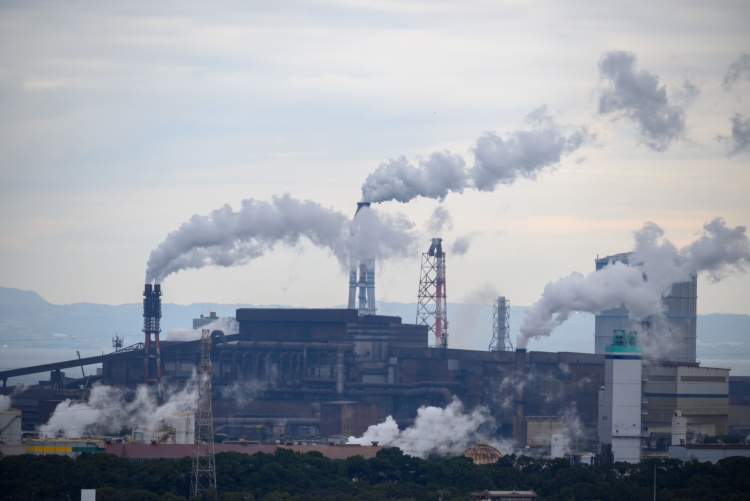
What are the causes of air pollution
Below is an introduction to the principal pollutants produced by industrial, domestic and traffic sources: View a glossary for terms used in air pollution.
- Sulphur dioxide
- Nitrogen oxides
- Particular matter (PM10, PM2.5 and PM1)
- Ozone and volatile organic compounds
- Toxic Organic Micro-Pollutants (TOMPS)
- Benzene
- 1,3-Butadiene
- Carbon monoxide
- Lead and heavy metals
| Pollutant | Description and Main UK Sources | Potential Effects on Health/Environment |
|---|---|---|
| Particulate Matter (PM10 and PM2.5) | PM includes particles with diameters <10µm (PM10) and <2.5µm (PM2.5). It arises from combustion, road transport (emissions, tyre and brake wear), quarrying, construction, ammonia, SO2, and NOx emissions. Includes human-made and natural sources like sea spray and Saharan dust. | Linked to respiratory and cardiovascular illness and mortality. PM2.5 has stronger health effects. No safe threshold has been identified. |
| Oxides of Nitrogen (NOx) | Includes NO and NO2. Produced by combustion (mainly road transport, electricity generation, industry). | NO2 causes airway inflammation and worsens asthma. NOx harms vegetation, contributes to acidification, eutrophication, secondary particles, and ozone. |
| Ozone (O3) | Not directly emitted. Formed by reaction of NOx and VOCs under sunlight, possibly from far away sources. | Irritates eyes and airways, reduces lung function, causes respiratory issues. Damages crops, forests, and biodiversity. |
| Sulphur Dioxide (SO2) | From burning sulphur-rich fuels like coal and oil (power stations, refineries, domestic heating in some regions). | Causes airway constriction (especially in asthmatics), forms secondary PM, damages ecosystems and biodiversity via acidification. |
| Polycyclic Aromatic Hydrocarbons (PAHs) | Mainly from domestic burning (coal, wood), fires, and industrial coke production. Road transport is a dominant source of less hazardous PAHs. | Linked to increased cancer risk (lung, skin, bladder). B[a]P is classified as “probably carcinogenic”. |
| Benzene | Emitted from domestic/industrial combustion and road transport. | Recognised carcinogen; no safe level. Linked to leukaemia and genetic damage. |
| 1,3-Butadiene | Mainly from petrol combustion (vehicles, synthetic rubber production). | Genotoxic carcinogen; linked to lymphoma and leukaemia. No safe level. |
| Carbon Monoxide (CO) | Formed by incomplete combustion of carbon fuels (mostly transport, also residential and industrial). | Reduces oxygen delivery in the body; dangerous for people with heart/brain oxygen delivery issues. |
| Lead (Pb) | Emitted from coal combustion, iron/steel production, and non-ferrous metal processes. | Causes damage to kidneys, nervous system, and development issues in children. Affects intellectual development. |
| Ammonia | Mainly from agriculture (manure, fertilisers), with smaller contributions from transport and waste disposal. | Contributes to ecosystem damage, eutrophication, acidification, and secondary PM formation leading to health effects. |
Historically, the main air pollution problem in both developed and rapidly industrialising countries has typically been high levels of smoke and sulphur dioxide emitted following the combustion of sulphur-containing fossil fuels such as coal, used for domestic and industrial purposes. These days, the major threat to clean air is now posed by traffic emissions. Petrol and diesel-engined motor vehicles emit a wide variety of pollutants, principally carbon monoxide (CO), oxides of nitrogen (NOx), volatile organic compounds (VOCs) and particulate matter (PM10), which have an increasing impact on urban air quality. In addition, pollutants from these sources may not only prove a problem in the immediate vicinity of these sources, but can be transported long distances.
Photochemical reactions resulting from the action of sunlight on nitrogen dioxide (NO2) and VOCs, typically emitted from road vehicles, lead to the formation of ozone. Ozone is a secondary pollutant, which often impacts rural areas far from the original emission site as a result of long-range transport.
In all except worst-case situations, industrial and domestic pollutant sources, together with their impact on air quality, tend to be steady or improving over time. However, traffic pollution problems are worsening world-wide.
Because of their potential impacts on human health, welfare and the natural environment, ambient concentrations for a number of these pollutants are measured continuously at a wide range of rural and urban locations throughout the UK.
Download a detailed list of the above pollutants - What are the causes of Air Pollution (PDF 139KB).
